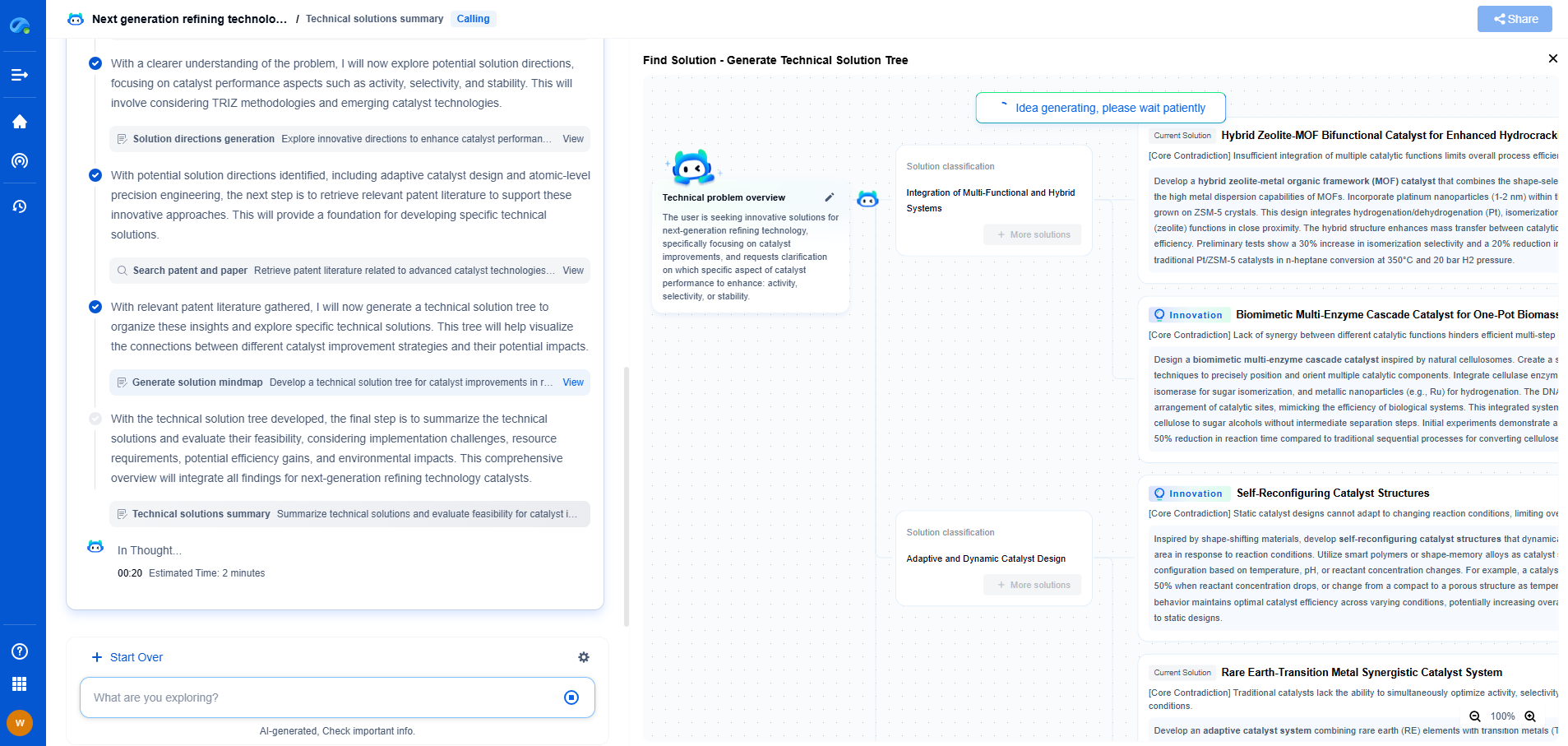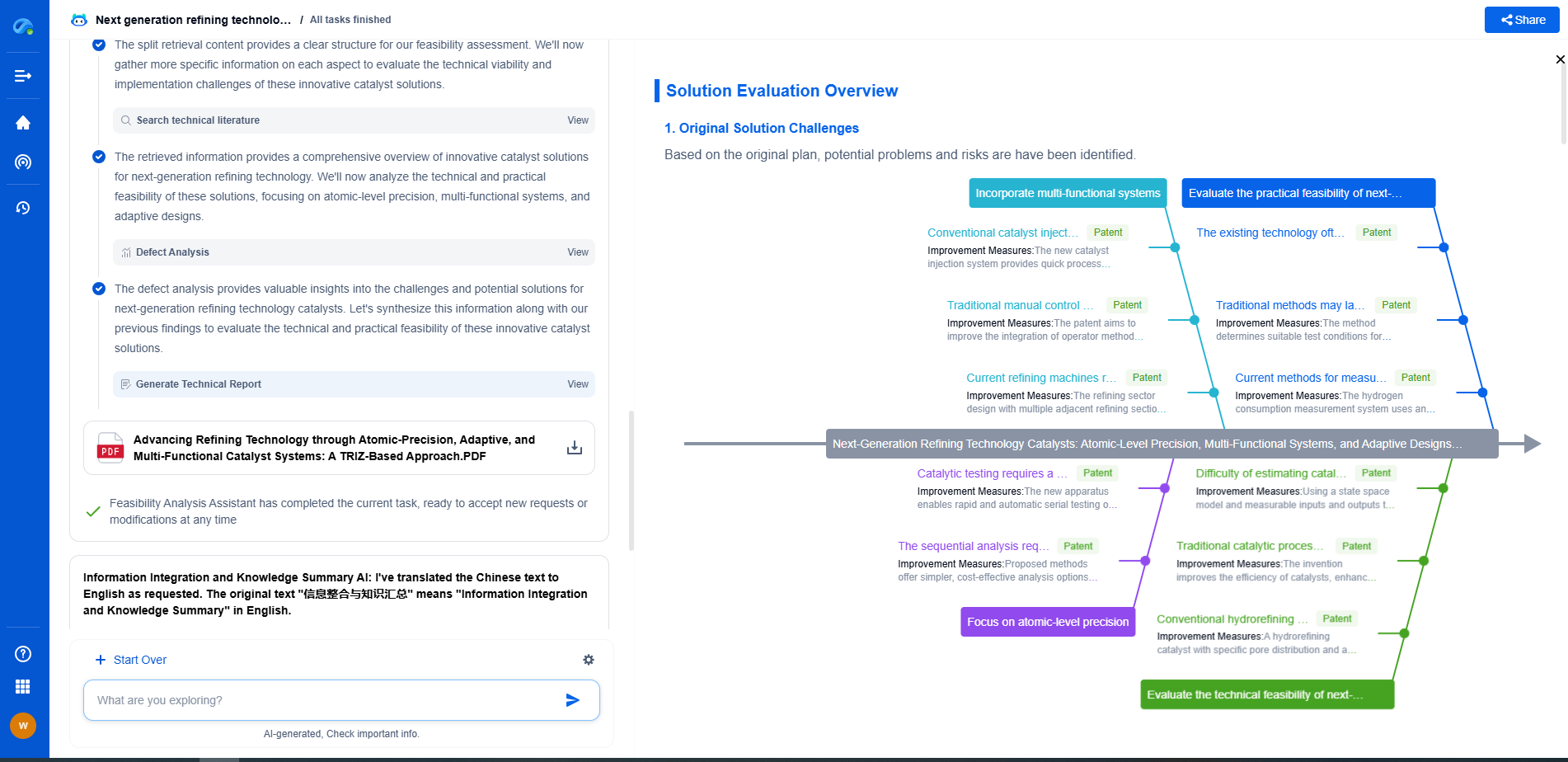The Future of Smart Structural Health Monitoring with IoT and AI
JUL 16, 2025 |
Understanding Structural Health Monitoring
Structural Health Monitoring involves the observation, collection, and analysis of data from structures such as bridges, buildings, and dams to assess their condition and performance. Traditionally, this has been a manual, time-consuming process that often relies on periodic inspections and maintenance schedules. The introduction of IoT and AI into SHM systems is revolutionizing this domain by automating data collection and analysis, leading to more efficient and effective maintenance strategies.
The Role of IoT in SHM
IoT devices, such as sensors and actuators, are crucial in collecting real-time data on various structural parameters. These can include stress, strain, temperature, and vibration levels. By deploying a network of smart sensors, critical data is continuously gathered and transmitted to centralized systems for analysis. This continuous flow of information ensures that any anomalies or potential issues are detected promptly, reducing the risk of catastrophic failures.
Moreover, IoT-enabled SHM systems offer enhanced scalability and flexibility. Structures of all sizes, from small buildings to expansive bridges, can be equipped with these smart devices, ensuring comprehensive monitoring capabilities. The ability to remotely monitor infrastructure also reduces the need for manual inspections, cutting down operational costs and improving safety conditions for workers.
Harnessing AI for Predictive Analysis
Artificial Intelligence takes structural health monitoring to the next level by enabling advanced data analysis and predictive capabilities. Machine learning algorithms can process vast amounts of data collected by IoT devices to identify patterns and trends. This allows for the prediction of potential failures before they occur, facilitating proactive maintenance strategies.
By using AI, SHM systems can also prioritize alerts based on severity, helping maintenance teams focus efforts where they are most needed. Furthermore, AI algorithms can continuously learn and improve from new data, ensuring that the monitoring system becomes more accurate and reliable over time.
The Benefits of Integrating IoT and AI in SHM
The integration of IoT and AI in structural health monitoring offers numerous advantages, including:
1. Enhanced Safety: Early detection of structural issues can prevent accidents and save lives, especially in critical infrastructure like bridges and tunnels.
2. Cost Efficiency: Predictive maintenance reduces unnecessary repairs and extends the lifespan of structures, leading to significant cost savings.
3. Real-time Decision Making: With continuous data analysis, stakeholders can make informed decisions quickly, responding to emergencies with greater agility.
4. Customization: IoT and AI technologies can be tailored to specific structures and environments, allowing for bespoke monitoring solutions that address unique challenges.
Challenges and Future Prospects
Despite the clear benefits, there are challenges that must be addressed to fully harness the potential of IoT and AI in SHM. Issues such as data privacy, cybersecurity, and the need for significant initial investment in technology infrastructure must be considered. Additionally, the complexity of AI models requires skilled personnel for development and maintenance, which can be a barrier for some organizations.
Looking ahead, advancements in sensor technology, AI algorithms, and data processing capabilities will continue to drive the evolution of smart SHM systems. The future promises even more sophisticated systems that can integrate with other smart city initiatives, contributing to the development of smarter, safer urban environments.
In conclusion, the fusion of IoT and AI in structural health monitoring heralds a new era of infrastructure management. By leveraging these technologies, we can ensure that our built environment is not only safe and reliable but also more sustainable and efficient. As the technology matures, it will undoubtedly become an indispensable tool in the maintenance and management of our world's infrastructure.
In the world of vibration damping, structural health monitoring, and acoustic noise suppression, staying ahead requires more than intuition—it demands constant awareness of material innovations, sensor architectures, and IP trends across mechanical, automotive, aerospace, and building acoustics.
Patsnap Eureka, our intelligent AI assistant built for R&D professionals in high-tech sectors, empowers you with real-time expert-level analysis, technology roadmap exploration, and strategic mapping of core patents—all within a seamless, user-friendly interface.
⚙️ Bring Eureka into your vibration intelligence workflow—and reduce guesswork in your R&D pipeline. Start your free experience today.
- R&D
- Intellectual Property
- Life Sciences
- Materials
- Tech Scout
- Unparalleled Data Quality
- Higher Quality Content
- 60% Fewer Hallucinations
Browse by: Latest US Patents, China's latest patents, Technical Efficacy Thesaurus, Application Domain, Technology Topic, Popular Technical Reports.
© 2025 PatSnap. All rights reserved.Legal|Privacy policy|Modern Slavery Act Transparency Statement|Sitemap|About US| Contact US: help@patsnap.com

